Syphilis home treatment. Syphilis: Understanding Symptoms, Stages, and Treatment Options for Men and Women
What are the stages of syphilis. How is syphilis transmitted. What are the symptoms of syphilis in men and women. How is syphilis diagnosed and treated. Can syphilis be cured completely. What complications can arise from untreated syphilis. How can syphilis be prevented.
What is Syphilis and How is it Transmitted?
Syphilis is a sexually transmitted disease (STD) caused by the bacterium Treponema pallidum. This infection can be found worldwide, with higher prevalence in certain regions, such as parts of the southern United States. The bacteria typically enter the body through the skin, mouth, or anus, leading to the formation of a painless skin ulcer called a chancre at the site of infection.
Transmission of syphilis occurs primarily through sexual contact with an infected individual. When a person’s body comes into contact with the skin ulcer or rash of someone with syphilis, they can contract the infection. It’s important to note that pregnant women with syphilis can also pass the infection to their unborn child, resulting in congenital syphilis.
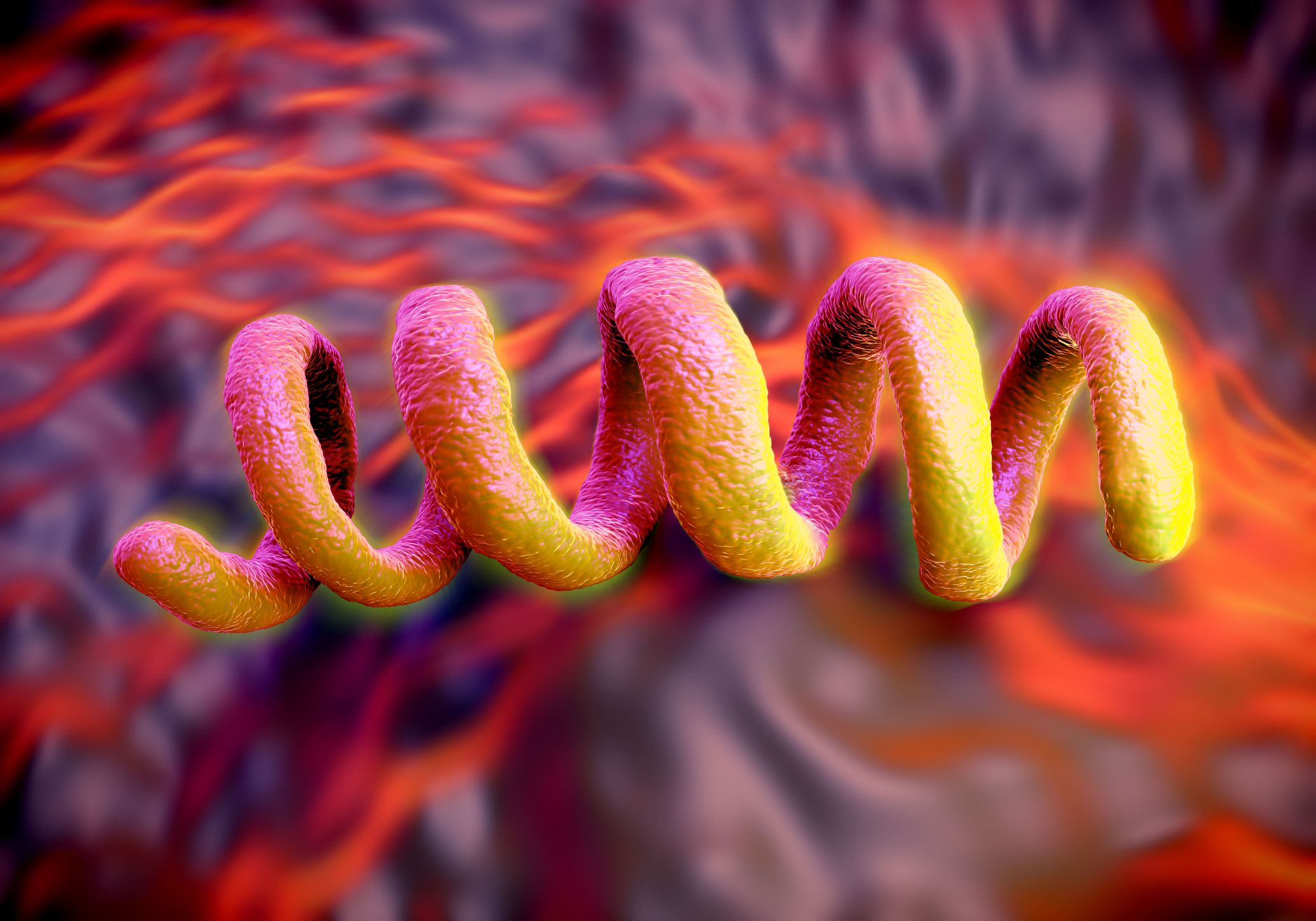
Common Misconceptions About Syphilis Transmission
- Syphilis can be transmitted through casual contact (False)
- Only people with visible symptoms can spread syphilis (False)
- Syphilis can be contracted from toilet seats or sharing utensils (False)
- Using condoms completely eliminates the risk of syphilis transmission (Partially true, but not 100% effective)
The Four Stages of Syphilis: From Primary to Tertiary
Syphilis progresses through four distinct stages, each with its own set of symptoms and potential complications. Understanding these stages is crucial for early detection and treatment.
Stage 1: Primary Syphilis
Primary syphilis typically manifests within 10 days to 3 months after exposure, with most cases developing symptoms within 3 to 4 weeks. The hallmark of this stage is the appearance of one or more painless ulcers (chancres) at the site of infection. These ulcers usually heal on their own within 1 to 5 weeks, even without treatment. However, it’s important to note that the disappearance of ulcers does not indicate that the infection has cleared.
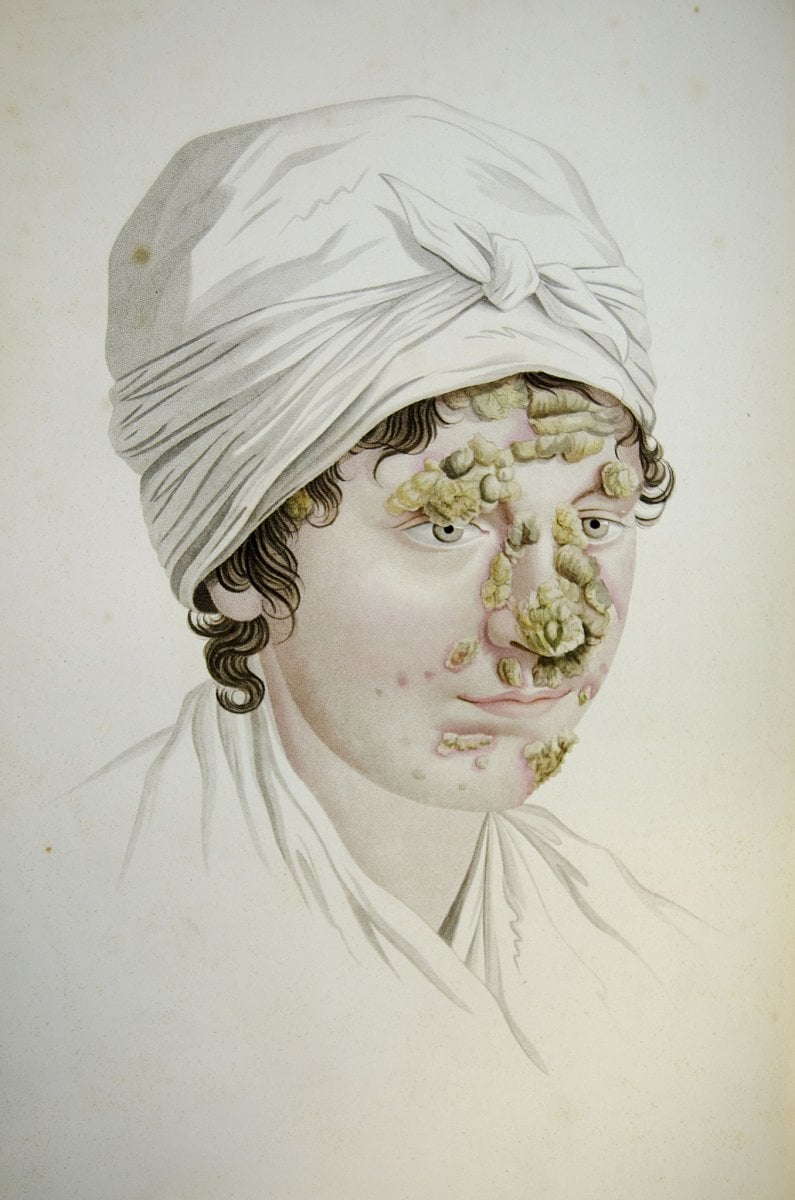
Stage 2: Secondary Syphilis
Secondary syphilis begins 2 weeks to 6 months after the initial ulcer heals, typically within 6 weeks. During this stage, the bacteria spread throughout the body, causing a widespread rash. The rash can vary in appearance from person to person but is often found on the palms of the hands and soles of the feet. Additional symptoms may include:
- Fever
- Sore throat
- Swollen glands
- General weakness and fatigue
Like primary syphilis, the symptoms of secondary syphilis resolve on their own within 2 to 6 weeks. However, the infection remains present and can progress to more severe stages if left untreated.
Stage 3: Latent Syphilis
After the symptoms of secondary syphilis subside, the infection enters a latent phase. During this stage, there are no visible signs or symptoms, but the bacteria remain in the body. Latent syphilis can persist for 20 years or more without treatment. Some individuals may experience occasional flare-ups of symptoms, particularly during the first year of Stage 3.
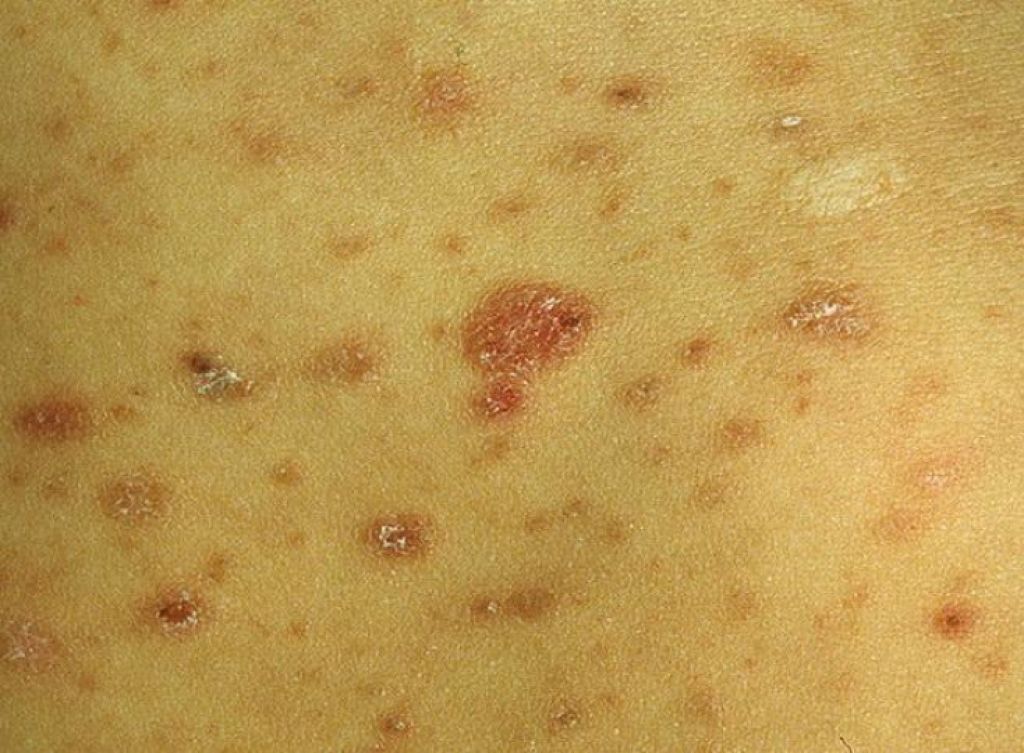
Stage 4: Tertiary or Late Syphilis
Approximately 25% of untreated individuals will progress to tertiary syphilis within 20 years of their initial infection. This advanced stage can cause severe damage to various organs in the body, including the brain, spinal cord, eyes, bones, and heart. The consequences of tertiary syphilis can be life-threatening and may lead to permanent disabilities.
Recognizing Syphilis Symptoms in Men and Women
Syphilis symptoms can vary between individuals and may differ slightly between men and women. However, the general progression of the disease remains consistent across genders.
Common Symptoms in Both Men and Women
- Painless chancre (ulcer) during primary stage
- Widespread rash, often on palms and soles
- Fever and swollen lymph nodes
- Fatigue and general malaise
- Hair loss in patches
- Muscle aches and joint pain
Symptoms Specific to Women
- Chancres on the cervix or vaginal walls
- Irregular menstrual bleeding
- Pregnancy complications if infected while pregnant
Symptoms Specific to Men
- Chancres on the penis or scrotum
- Potential testicular pain or swelling
Is it possible to have syphilis without noticeable symptoms? Yes, it is possible to have syphilis without experiencing obvious symptoms, especially during the latent stage. This underscores the importance of regular STD testing for sexually active individuals, even in the absence of visible signs of infection.

Diagnosis and Testing Methods for Syphilis
Accurate diagnosis of syphilis is crucial for timely treatment and prevention of complications. Healthcare providers employ various methods to detect the presence of the Treponema pallidum bacterium.
Physical Examination
If a patient presents with skin ulcers or a rash, a healthcare provider will conduct a thorough physical examination. They may take a sample from the ulcer or rash to examine under a microscope for the presence of syphilis bacteria.
Blood Tests
Blood tests are the most common and reliable method for diagnosing syphilis, especially when there are no visible symptoms. There are two main types of blood tests used:
- Nontreponemal tests: These include the Venereal Disease Research Laboratory (VDRL) and Rapid Plasma Reagin (RPR) tests. They detect antibodies produced by the body in response to syphilis infection.
- Treponemal tests: These tests, such as the Fluorescent Treponemal Antibody Absorption (FTA-ABS) test, directly detect antibodies specific to the syphilis bacterium.
Typically, a combination of both nontreponemal and treponemal tests is used to confirm a syphilis diagnosis.
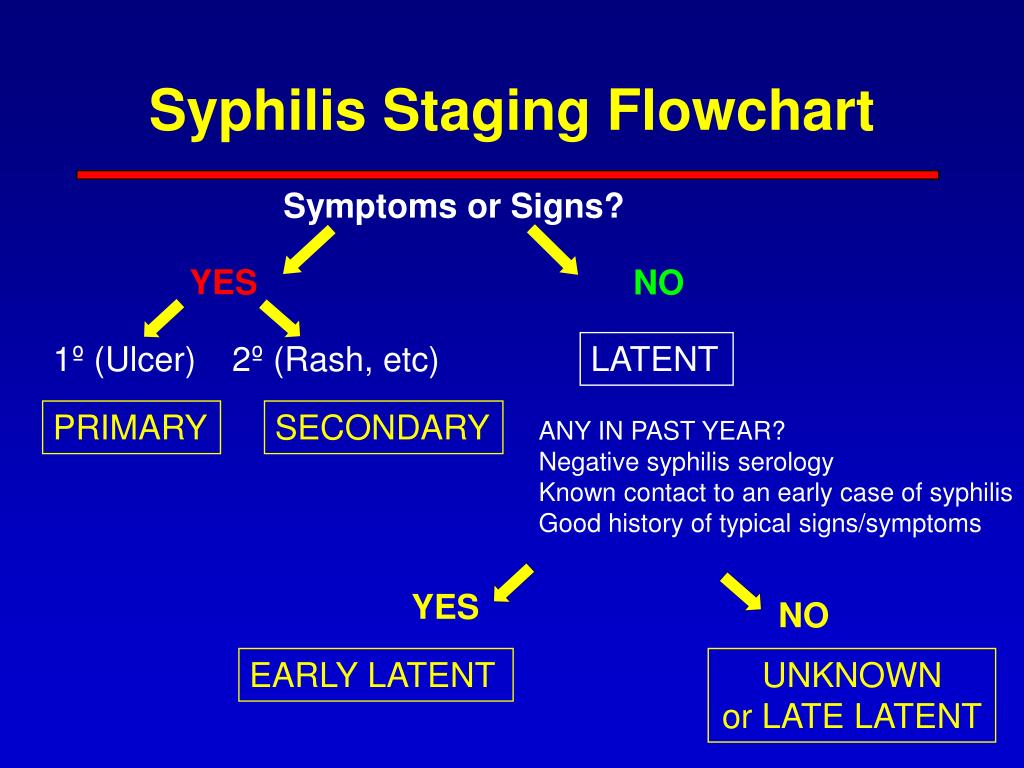
Screening During Pregnancy
In many regions, including New York State, all pregnant women are screened for syphilis at the time of delivery. This practice helps identify babies at risk for congenital syphilis and allows for prompt treatment.
How long after exposure should one get tested for syphilis? It’s recommended to get tested for syphilis at least 3 weeks after potential exposure. However, since the incubation period can vary, follow-up testing may be necessary if initial results are negative.
Treatment Options and Effectiveness
Syphilis is a curable infection when diagnosed and treated promptly. The primary treatment option for all stages of syphilis is penicillin, which has proven to be highly effective in eliminating the bacteria.
Penicillin Treatment
Penicillin G, administered through intramuscular injection, is the first-line treatment for syphilis. The dosage and duration of treatment depend on the stage of the infection:
- Primary, secondary, and early latent syphilis: A single dose of long-acting Benzathine penicillin G
- Late latent syphilis or tertiary syphilis: Multiple doses over several weeks
Alternative Treatments
For individuals allergic to penicillin, alternative antibiotics may be prescribed, such as:

- Doxycycline
- Tetracycline
- Ceftriaxone
However, it’s important to note that pregnant women with penicillin allergies must still be treated with penicillin to effectively treat both the mother and the unborn child. In these cases, healthcare providers can take precautions to prevent allergic reactions through desensitization protocols.
Treatment Efficacy and Follow-up
While syphilis treatment is generally highly effective, follow-up testing is essential to ensure the infection has been completely eliminated. Patients should abstain from sexual activity until treatment is complete and follow-up tests confirm the absence of infection.
Can syphilis return after successful treatment? While treatment effectively cures syphilis, it does not provide immunity against future infections. Individuals can be reinfected if exposed to the bacteria again, highlighting the importance of ongoing prevention measures.
Potential Complications of Untreated Syphilis
Left untreated, syphilis can lead to severe health complications affecting various organ systems. The risk of complications increases as the infection progresses to later stages.
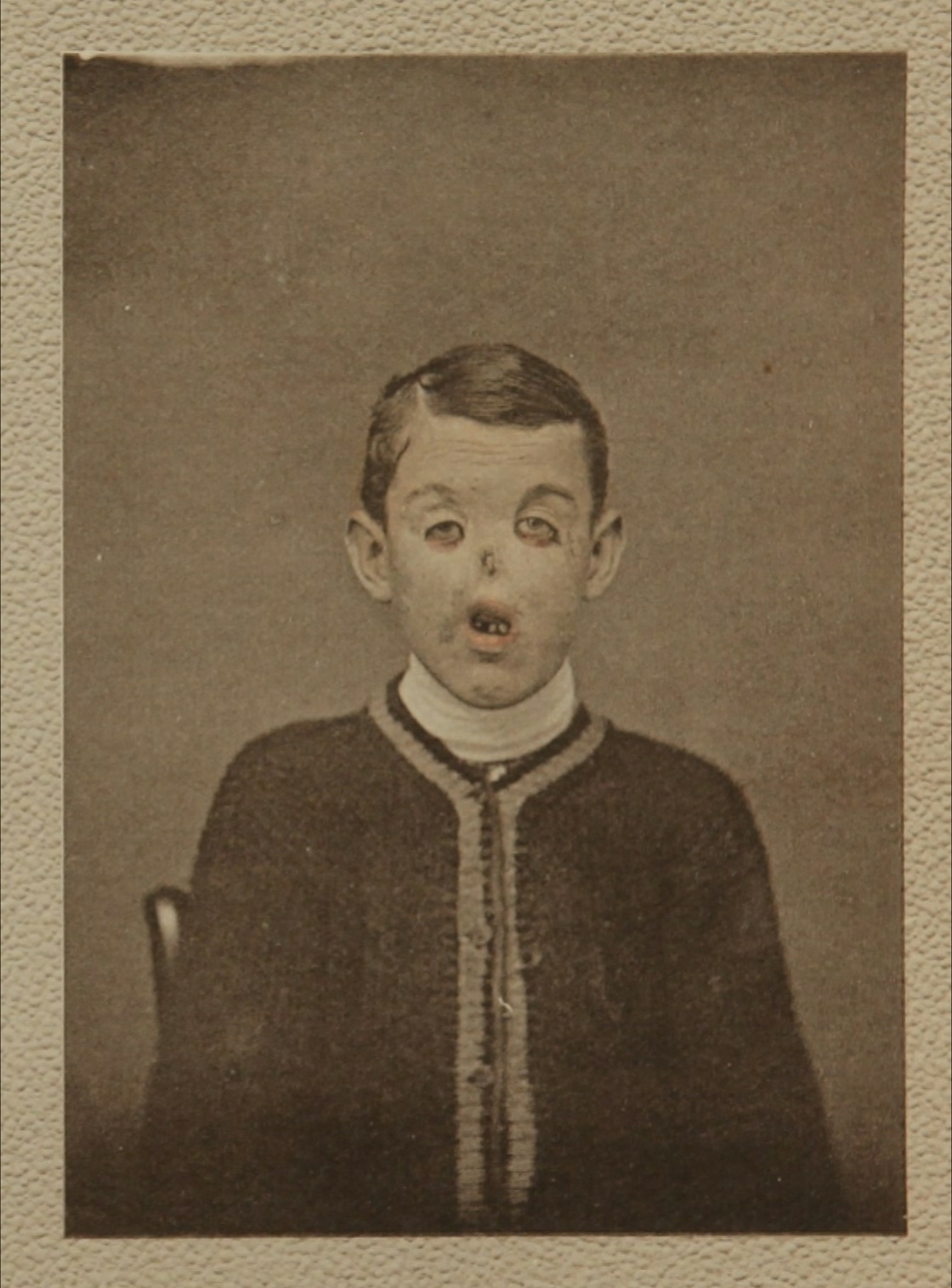
Neurological Complications
- Neurosyphilis: Infection of the brain and spinal cord
- Meningitis
- Stroke
- Dementia
- Paralysis
Cardiovascular Complications
- Aortitis: Inflammation of the aorta
- Aneurysms
- Heart valve damage
Ocular Complications
- Uveitis
- Retinitis
- Optic neuritis
- Potential blindness
Other Systemic Complications
- Gummas: Soft, tumor-like growths in various tissues
- Bone and joint problems
- Liver damage
Complications in Pregnancy and Congenital Syphilis
Pregnant women with untreated syphilis face significant risks, including:
- Miscarriage
- Stillbirth
- Premature birth
- Low birth weight
- Congenital syphilis in the newborn
Congenital syphilis can cause severe, lifelong health problems for the affected child, including damage to the liver, brain, eyes, teeth, bones, and lungs.
Does syphilis increase the risk of HIV infection? Yes, having syphilis increases an individual’s susceptibility to HIV infection. The presence of syphilis ulcers provides an easy entry point for the HIV virus. Additionally, individuals with both syphilis and HIV face a higher risk of serious health complications, emphasizing the importance of comprehensive STD testing and treatment.
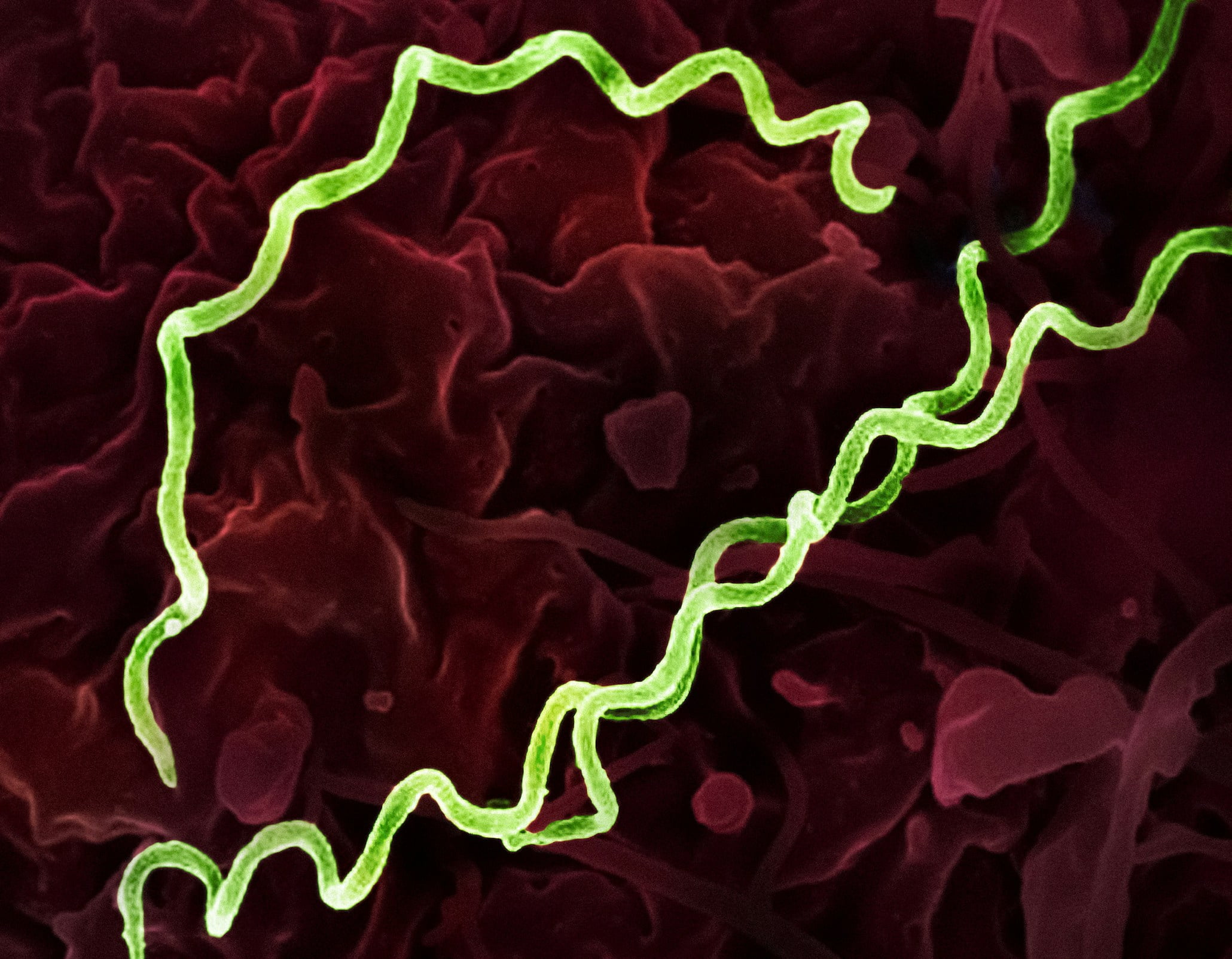
Prevention Strategies and Safe Practices
Preventing syphilis and other sexually transmitted infections requires a combination of safe sexual practices, regular testing, and open communication with sexual partners.
Safe Sexual Practices
- Consistent and correct use of condoms during all sexual activities
- Limiting the number of sexual partners
- Abstaining from sexual contact with individuals known to have syphilis or other STDs
- Avoiding sexual activity while under the influence of drugs or alcohol, which can impair judgment
Regular STD Testing
Routine screening for syphilis and other STDs is crucial, especially for individuals at higher risk. The Centers for Disease Control and Prevention (CDC) recommends annual syphilis testing for:
- Sexually active men who have sex with men
- Individuals with HIV
- Pregnant women (at their first prenatal visit and potentially again in the third trimester)
Open Communication
Honest discussions about sexual health with partners can help reduce the risk of syphilis transmission. This includes:
- Discussing STD testing history and results
- Being open about current or past infections
- Encouraging partners to get tested regularly
Public Health Measures
Public health initiatives play a crucial role in syphilis prevention:
- Education and awareness campaigns
- Access to free or low-cost STD testing and treatment
- Partner notification services to inform potentially exposed individuals
- Targeted screening programs for high-risk populations
How effective are condoms in preventing syphilis transmission? While condoms significantly reduce the risk of syphilis transmission, they are not 100% effective. Syphilis can be transmitted through contact with infected areas not covered by condoms, such as the scrotum or anal region. Therefore, regular testing and open communication remain essential components of prevention.
Syphilis
- “Syphilis: Do you know what to look for?” (PDF)
What is syphilis?
“Syph” “The Pox” or “Bad Blood”
Syphilis is a sexually transmitted disease (STD) that is found around the world. In the United States it is more widespread in parts of the south.
What causes syphilis?
Syphilis is caused by bacteria (Treponema pallidum) that enter through your skin, mouth, or anus. This causes a painless skin ulcer (chancre) to form at the infection site. After an ulcer forms, syphilis spreads through your blood. This causes a skin rash. Later on, in some people, syphilis can cause damage to any organ of the body.
How can I get syphilis?
You can get syphilis if part of your body touches the skin ulcer or rash of someone with syphilis. This happens most often during sex. A pregnant woman with syphilis can pass the infection to her unborn child. This is called congenital syphilis.
What are the signs and symptoms?
Syphilis has four stages.

Stage 1, Primary syphilis
- Within 10 days to 3 months after sex with someone who has syphilis, one or more painless ulcers will form where there was contact. Ulcers usually form within 3 to 4 weeks.
- Within 1 to 5 weeks, ulcers heal without treatment. But, this does not mean you no longer have syphilis. See your health care provider for treatment even if your ulcers go away.
Stage 2, Secondary syphilis
- Begins 2 weeks to 6 months after the ulcer heals. This stage usually begins within 6 weeks.
- During this time, the bacteria will travel through your body causing a widespread rash. The rash can look very different from person to person. It is often found on the palms of the hands and the soles of the feet.
- As the bacteria spread through your blood, you may get a fever, a sore throat, and swollen glands. You may also feel generally weak and tired.
- Like primary syphilis, the signs and symptoms of secondary syphilis go away on their own without treatment in 2 to 6 weeks.
 But, you still have syphilis and it is dangerous. You should see your health care provider even if you do not have signs or symptoms. If you do not, you may get sicker.
But, you still have syphilis and it is dangerous. You should see your health care provider even if you do not have signs or symptoms. If you do not, you may get sicker.
Stage 3, Latent syphilis
- After the signs of secondary syphilis go away, the infection becomes hidden (latent). Without treatment you will still have syphilis for 20 years or more even though you will not have any signs or symptoms. People with latent syphilis may sometimes have symptoms (flare-ups) like skin rash, fever, a sore throat, swollen glands or feeling weak and tired. This is most common during the first year of Stage 3.
Stage 4, Tertiary or Late syphilis
- About one of every four people who don’t get any treatment within 20 years of their first skin ulcer, will get this type of syphilis.
- Late syphilis can damage any organ in your body.
Can syphilis cause other problems if it’s not treated?
Yes. If you progress to Stage 4 syphilis, the damage to your body will get worse as time goes on. If your brain and spinal cord are affected you may become permanently mentally ill and paralyzed. You may also become blind and your bones and heart may be harmed. (Your aorta may become inflamed. This is the large blood vessel that connects to your heart.) Stage 4 syphilis can cause many other health problems. These problems may be mild or they may be serious enough to threaten your life.
If your brain and spinal cord are affected you may become permanently mentally ill and paralyzed. You may also become blind and your bones and heart may be harmed. (Your aorta may become inflamed. This is the large blood vessel that connects to your heart.) Stage 4 syphilis can cause many other health problems. These problems may be mild or they may be serious enough to threaten your life.
If you have syphilis, it will make it easier for you to get HIV, the virus that causes AIDS. If you have HIV and syphilis, it’s even more important for you to get proper treatment quickly. Because you have both diseases, you are at a greater risk for serious health problems.
A pregnant woman with syphilis may pass this infection to her unborn baby. This is called congenital syphilis. It can cause the baby to die before it is born – a stillbirth. A baby who has syphilis at birth may suffer permanent damage to their liver, brain, eyes, teeth, bones, glands and lungs.
How will I know if I have syphilis?
If you have skin ulcers or a rash, your health care provider should examine you. He or she will take a sample from your ulcer or rash and use a microscope to look for bacteria. Even if you don’t have symptoms, your provider can find out if you have syphilis by testing your blood.
He or she will take a sample from your ulcer or rash and use a microscope to look for bacteria. Even if you don’t have symptoms, your provider can find out if you have syphilis by testing your blood.
Health care providers give one of these blood tests to all pregnant women in New York State when they give birth. These tests help find out which babies are at risk for congenital syphilis.
Is there a cure?
Yes. Penicillin is the first-choice treatment for every stage of syphilis. It usually cures the disease. If you are allergic to penicillin, your health care provider can use a different medicine unless you are pregnant. All pregnant women must be treated with penicillin to effectively treat the baby. In those cases, you can still be treated safely because your doctor will take precautions to prevent an allergic reaction to the medicine. It is important for you to visit your health care provider to be sure the disease is cured.
When can I have sex again?
If you have been treated for syphilis, you should not have sex for 7 days after your treatment is over. Also, if your sex partners are not treated you can get syphilis again. Do not have sex with any partner who has syphilis until 7 days after he or she finishes treatment.
Also, if your sex partners are not treated you can get syphilis again. Do not have sex with any partner who has syphilis until 7 days after he or she finishes treatment.
What about my partner(s)?
Syphilis is spread through sex. So, even if your sex partners don’t have any symptoms they should be checked for syphilis.
Can I get this infection again?
Yes. You are at risk for getting syphilis again if your partner(s) aren’t properly treated before you have sex again. You are also at risk if you have unprotected sex. Unprotected sex means sex without a condom.
How can I prevent syphilis?
Not having sex (abstinence) is the only sure way to avoid infection.
If you choose to be sexually active, use latex or polyurethane condoms each time you have oral, anal or vaginal sex. This will lower your chances of giving or getting syphilis. But, using condoms will not totally stop your risk of giving or getting syphilis. This is because condoms do not cover ulcers and rashes that may be on other parts of your body or your partner’s body. Condoms do help prevent the spread of other STDs including HIV, the virus that causes AIDS.
Condoms do help prevent the spread of other STDs including HIV, the virus that causes AIDS.
If you are sexually active, you and your partner( s) should get a full physical checkup. This includes a complete sexual history and testing for HIV and common STDs such as gonorrhea, Chlamydia, syphilis, herpes, genital warts and trichomoniasis.
Will anyone know the results of the exams?
Your test results and any treatment will be kept absolutely confidential. No one can find out your results, except you. If you are under 18 you can be checked and treated for STDs without getting permission from your parents.
To learn more:
If you have more questions about syphilis, or you want to know how to find a clinic near you, call your local health department or family planning program.
You can also find a testing center near you at http://gettested.cdc.gov/.
Symptoms, Diagnosis, Treatment, and Prevention
We include products we think are useful for our readers. If you buy through links on this page, we may earn a small commission Here’s our process.
If you buy through links on this page, we may earn a small commission Here’s our process.
Healthline only shows you brands and products that we stand behind.
Our team thoroughly researches and evaluates the recommendations we make on our site. To establish that the product manufacturers addressed safety and efficacy standards, we:
- Evaluate ingredients and composition: Do they have the potential to cause harm?
- Fact-check all health claims: Do they align with the current body of scientific evidence?
- Assess the brand: Does it operate with integrity and adhere to industry best practices?
We do the research so you can find trusted products for your health and wellness.
Read more about our vetting process.
Was this helpful?
Syphilis is caused by the bacteria Treponema pallidum and is transmitted through sexual contact. It can be hard to diagnose, but without treatment, it can cause serious damage to multiple body systems over time.
People have been getting, treating, and surviving syphilis for hundreds of years. In fact, treatments are so well established that, at one point, it was thought possible to eradicate syphilis completely. Despite this, rates of syphilis are actually rising among several demographics in the United States.
In 2020, 133,945 new cases of syphilis (all stages) were reported in the United States, according to the Centers for Disease Control and Prevention (CDC). Syphilis in people with vaginas is rising slightly more than in people with penises, though both groups are seeing an uptick in cases overall.
Someone can have it without showing any symptoms for years. However, the earlier syphilis is discovered, the better. Syphilis that remains untreated for a long time can cause major damage to important organs, such as the heart and the brain.
Understanding the symptoms and causes of syphilis can help you protect yourself. If you do have syphilis, understanding this infection can help you recognize signs of the condition and prevent transmission.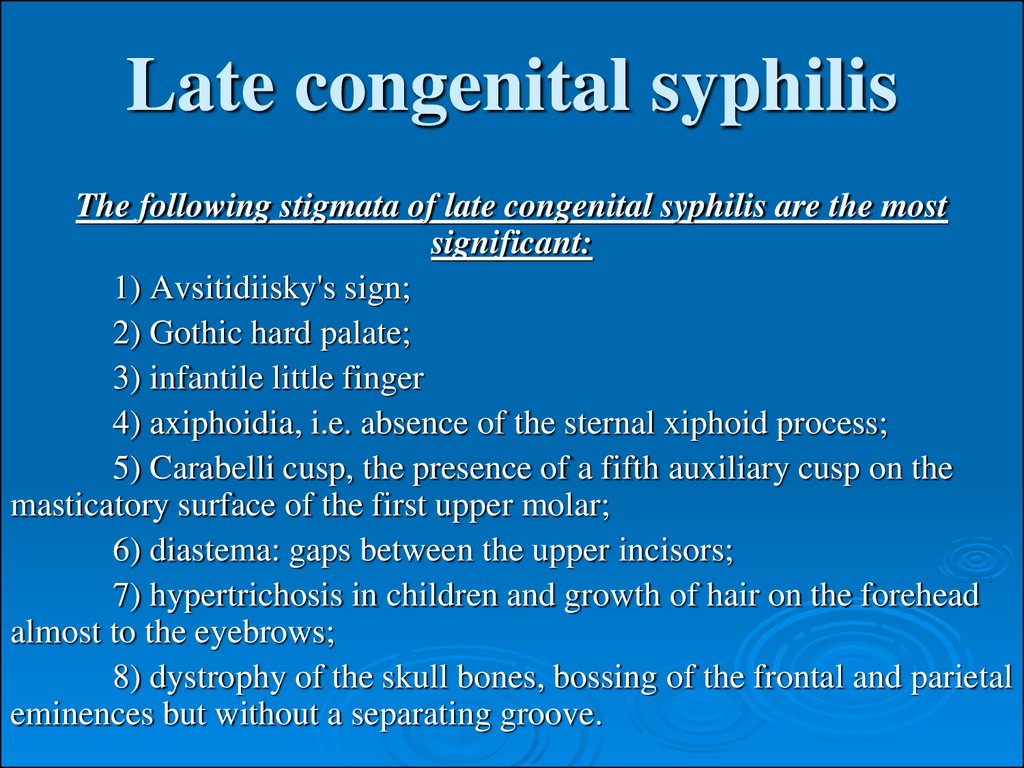
Let’s go over what we know about syphilis, who is most at risk, and what the standard treatments for it are today.
Syphilis is caused by a bacterial infection. In 1905, German scientists discovered that the bacterium Treponema pallidum is responsible for the infection.
The only way syphilis is transmitted is through direct contact with syphilitic chancres, or sores. These sores tend to develop on or in the:
- mouth
- penis
- vagina
- anus
Syphilis is primarily transmitted sexually. That means you can contract it through oral, anal, or vaginal sex, or direct genital-to-genital contact.
Babies can contract syphilis if their mother has an untreated infection. This is called congenital syphilis. Syphilis can also be transmitted through blood transfusions, although that is extraordinarily rare.
Contrary to myth, you cannot contract syphilis by:
- sharing a toilet
- wearing another person’s clothing
- using another person’s eating utensils
This is because the bacteria that cause syphilis can’t live for very long outside the human body.
Anyone can contract syphilis. However, certain factors may increase your chances of contracting an infection. The following groups of people have an increased risk of contracting syphilis:
- people who have sex without a barrier method, like a condom, with multiple partners
- men who have sex with men
- people who have HIV
- people who have partners with syphilis
The four stages of syphilis are:
- primary
- secondary
- latent
- tertiary
Syphilis is most infectious during the first two stages.
When syphilis is in the hidden, or latent, stage, the disease remains active but often doesn’t cause symptoms. Tertiary syphilis is the most destructive to health.
Primary syphilis
The primary stage of syphilis occurs about 3 to 4 weeks after a person contracts the bacteria. It begins with a small, round sore called a chancre. A chancre is painless, but it’s highly infectious. People may not even notice when they have one. This sore may appear wherever the bacteria entered the body, such as on or inside the mouth, genitals, or rectum.
This sore may appear wherever the bacteria entered the body, such as on or inside the mouth, genitals, or rectum.
On average, the sore shows up around 3 weeks after infection, but it can take between 10 to 90 days to appear. The sore remains for 2 to 6 weeks. Sometimes the only symptom will be swollen lymph nodes.
Syphilis is transmitted by direct contact with a sore. This usually occurs during sexual activity, including oral sex.
Secondary syphilis
Skin rashes and a sore throat may develop during the second stage of syphilis. The rash won’t itch and is usually found on the palms and soles, but it may occur anywhere on the body. Some people don’t notice the rash before it goes away.
Other symptoms of secondary syphilis may include:
- headaches
- swollen lymph nodes
- fatigue
- fever
- weight loss
- hair loss
- aching joints
These symptoms will go away whether treatment is received. However, without treatment, a person still has syphilis.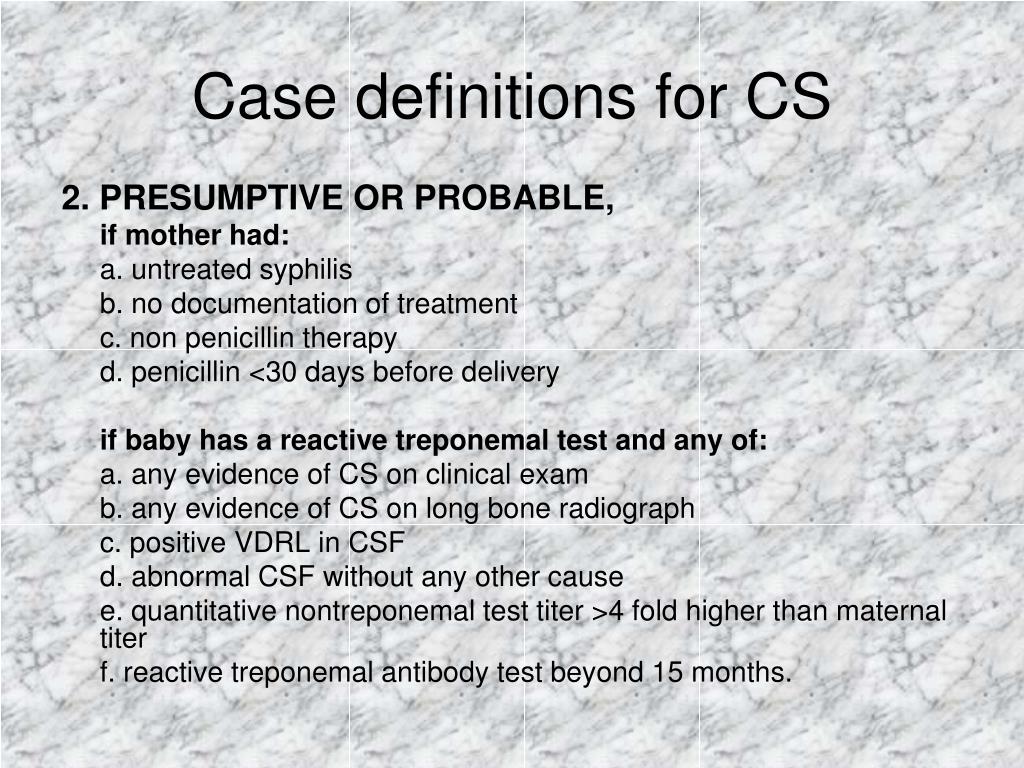
Secondary syphilis is often mistaken for other conditions, such as:
- pityriasis rosea
- lichen planus
- psoriasis
For this reason, syphilis has been known as the “great imitator.” Because the symptoms can be so nonspecific, people experiencing symptoms may ignore them, or sometimes clinicians don’t suspect the presence of the infection.
Latent syphilis
The third stage of syphilis is the latent, or hidden, stage. The primary and secondary symptoms disappear, and there won’t be any noticeable symptoms at this stage. However, the bacteria remain in the body. This stage could last for years before progressing to tertiary syphilis.
Tertiary syphilis
The last stage of infection is tertiary syphilis. About 14 to 40 percent of people with syphilis enter this stage. Tertiary syphilis can occur years or decades after the initial infection. Tertiary syphilis can be life-threatening. Some other potential outcomes of tertiary syphilis include:
- blindness
- loss of hearing
- mental health conditions
- memory loss
- destruction of soft tissue and bone
- neurological disorders, such as stroke or meningitis
- heart disease
- neurosyphilis, which is an infection of the brain or spinal cord
If you think you might have syphilis, go to your doctor as soon as possible.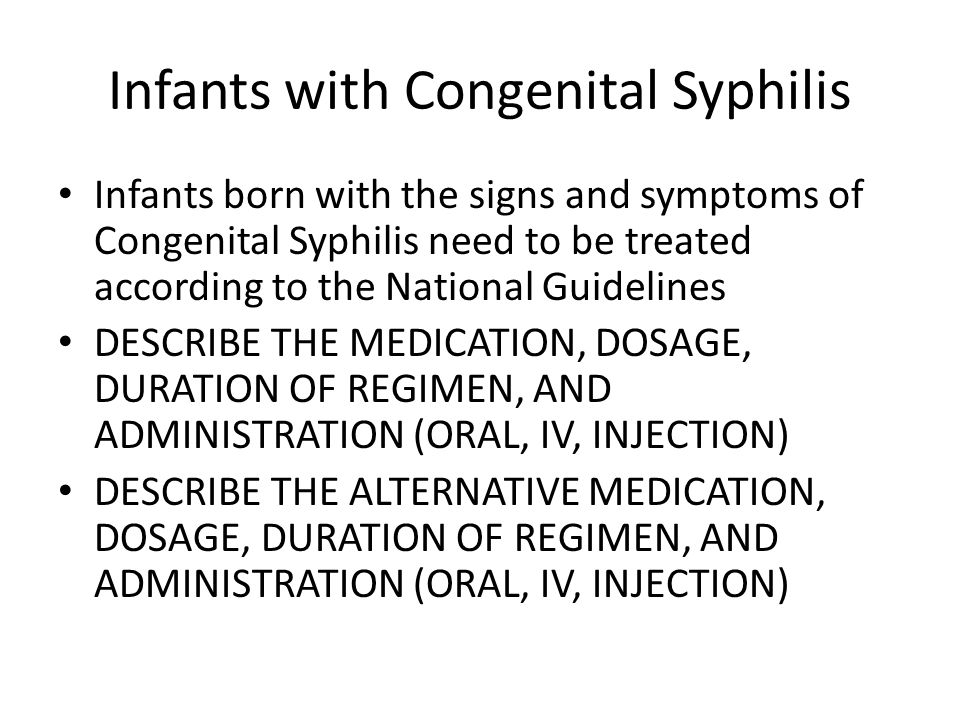 If you prefer, you can also use a local health clinic for testing.
If you prefer, you can also use a local health clinic for testing.
Your doctor or healthcare professional will take a blood sample to run tests, and also conduct a thorough physical examination. If a sore is present, they may take a sample from the sore to determine if the syphilis bacteria are present.
If your doctor or healthcare professional suspects that you’re having nervous system problems because of tertiary syphilis (and you have positive screening blood tests), you may need a lumbar puncture, or spinal tap. During this procedure, spinal fluid is collected so that your doctor can test for syphilis bacteria.
If you’re pregnant, your doctor should screen you for syphilis and other sexually transmitted infections (STIs) as part of your regular prenatal care during the first trimester. This is because STIs can increase the risk of pregnancy complications, such as miscarriage, stillbirth, and premature birth.
Doctors also do an STI screening that includes syphilis because it can be transmitted to the fetus. This is known as congenital syphilis. Untreated congenital syphilis can cause severe damage in a newborn and be life threatening.
This is known as congenital syphilis. Untreated congenital syphilis can cause severe damage in a newborn and be life threatening.
A pregnant person will almost always transmit syphilis to their baby. This is why treatment for syphilis is important during pregnancy to protect your health as well as the health of your baby.
Babies born with congenital syphilis may develop:
- developmental delays
- seizures
- rashes
- fever
- swollen liver or spleen
- anemia
- jaundice
- infectious sores
Untreated congenital syphilis can lead to late-stage syphilis. This can cause damage to a baby’s:
- bones
- teeth
- eyes
- ears
- brain
Penicillin is the main treatment for syphilis during pregnancy. If you have a penicillin allergy, your doctor can still administer penicillin over the course of several hours. This allows your body to receive the drug without having an allergic reaction.
Testing for syphilis at home
You can test for syphilis with an at-home testing kit. Any result, either positive or negative, should be followed up with a doctor’s appointment.
There are several at-home syphilis tests on the market. If you have an increased risk of contracting syphilis for any reason, testing regularly at home may be beneficial.
Syphilis testing is also readily accessible through routine clinic appointments or at most city health departments. These tests are often available at little to no cost. Healthline has a state-by-state resource here that can help.
The best way to prevent syphilis is to practice safe sex. Use condoms during any type of sexual contact. In addition, it may be helpful to:
- Use a dental dam (a square piece of latex) or condoms during oral sex.
- Avoid sharing sex toys.
- Get screened for STIs and talk with your partners about their results.
Syphilis can also be transmitted through shared needles. Avoid sharing needles if using injected drugs.
Avoid sharing needles if using injected drugs.
Untreated syphilis can have devastating effects, including:
- gummas, which contain masses of dead, swollen, fiber-like tissue. They’re most often found in the liver. They can also occur in the brain, heart, skin, bones, eyes, and testis.
- blindness
- hearing loss
- brain damage
- paralysis
- meningitis
- heart valve damage
- aneurysm
- aortitis (inflammatory aortic disease)
HIV
People with syphilis have a significantly increased chance of contracting HIV. The sores the disease causes make it easier for HIV to enter the body.
It’s also important to note that those with HIV may experience different syphilis symptoms than those who don’t have HIV. If you have HIV, talk with your doctor about how to recognize syphilis symptoms.
The first stage of syphilis can easily go undetected. The symptoms in the second stage are also common symptoms of other illnesses. This means that if any of the following applies to you, consider getting tested for syphilis. It doesn’t matter if you’ve ever had any symptoms. Get tested if you:
This means that if any of the following applies to you, consider getting tested for syphilis. It doesn’t matter if you’ve ever had any symptoms. Get tested if you:
- have had unprotected (condomless) sex with someone who might have had syphilis
- are pregnant
- are a sex worker
- are in prison
- have had condomless sex with multiple people
- have a partner who has had condomless sex with multiple people
- are a man who has sex with men
If the test comes back positive, it’s important to complete the full treatment. Make sure to finish the full course of antibiotics, even if symptoms disappear. Also avoid all sexual activity until your doctor tells you that it’s safe. Consider getting tested for HIV as well.
People who have tested positive for syphilis should notify all of their recent sexual partners so that they can also get tested and receive treatment.
If you believe there’s a chance you’ve been in contact with syphilis, visit a doctor.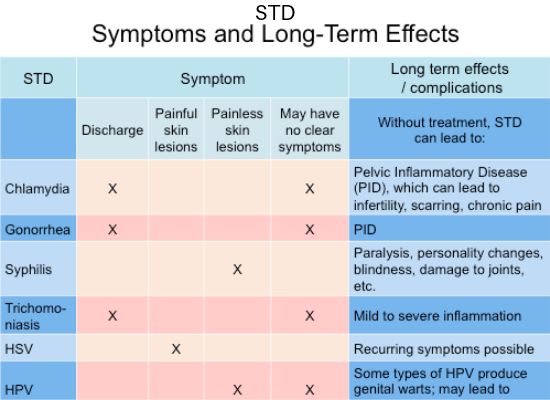 The signs and symptoms of syphilis may be difficult, or impossible, to detect without a blood test.
The signs and symptoms of syphilis may be difficult, or impossible, to detect without a blood test.
Talk with a doctor if you:
- notice what you think could be syphilis sores
- have been told by a sexual partner that they have syphilis
- are sexually active but have never had an STI test
Also be aware that all pregnant people should receive a syphilis test in their prenatal appointments as part of standard care. If it doesn’t look like this test will be included in your initial prenatal blood panel, ask for it.
Is syphilis 100 percent curable?
Yes. Syphilis can be cured by taking the antibiotics your doctor administers. However, any damage that has already been done by this disease cannot be undone by taking antibiotics.
What are the signs of syphilis in a person with a penis?
The early symptoms of syphilis often go overlooked. A syphilis sore called a chancre usually occurs where the infection enters the body. This can be the penis, scrotum, anus, or mouth.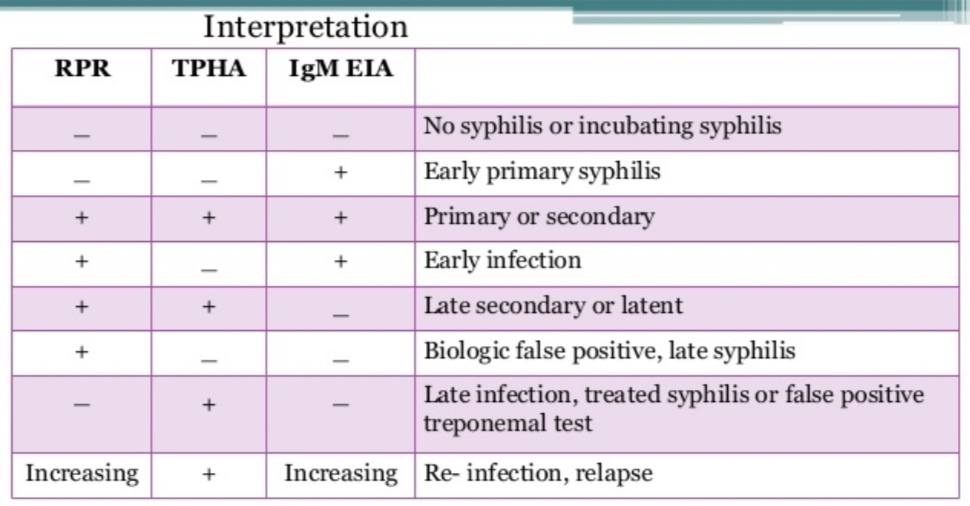 The sore is usually painless and resolves on its own. As the disease progresses, rashes will occur on parts of the body including the palms of the hands and soles of the feet.
The sore is usually painless and resolves on its own. As the disease progresses, rashes will occur on parts of the body including the palms of the hands and soles of the feet.
How long can you have syphilis without knowing it?
Untreated syphilis progresses into the latency (hidden) stage after the second stage rash resolves. During this stage you’ll have no symptoms. Latency can last anywhere from 1 to 20 years, or longer. If you suspect you may have contracted syphilis years ago, see your doctor for a blood test. You can still have treatment that cures the disease and stops future damage from occurring.
Will I always test positive for syphilis?
You may. The antibodies produced by syphilis may stay in your body, even after treatment has occurred. This means that you may always test positive for this disease, even if you no longer have the bacteria.
Can syphilis be cured?
Yes, syphilis can be cured. The bacterial infection can be resolved by undergoing a full treatment regimen of prescription antibiotics.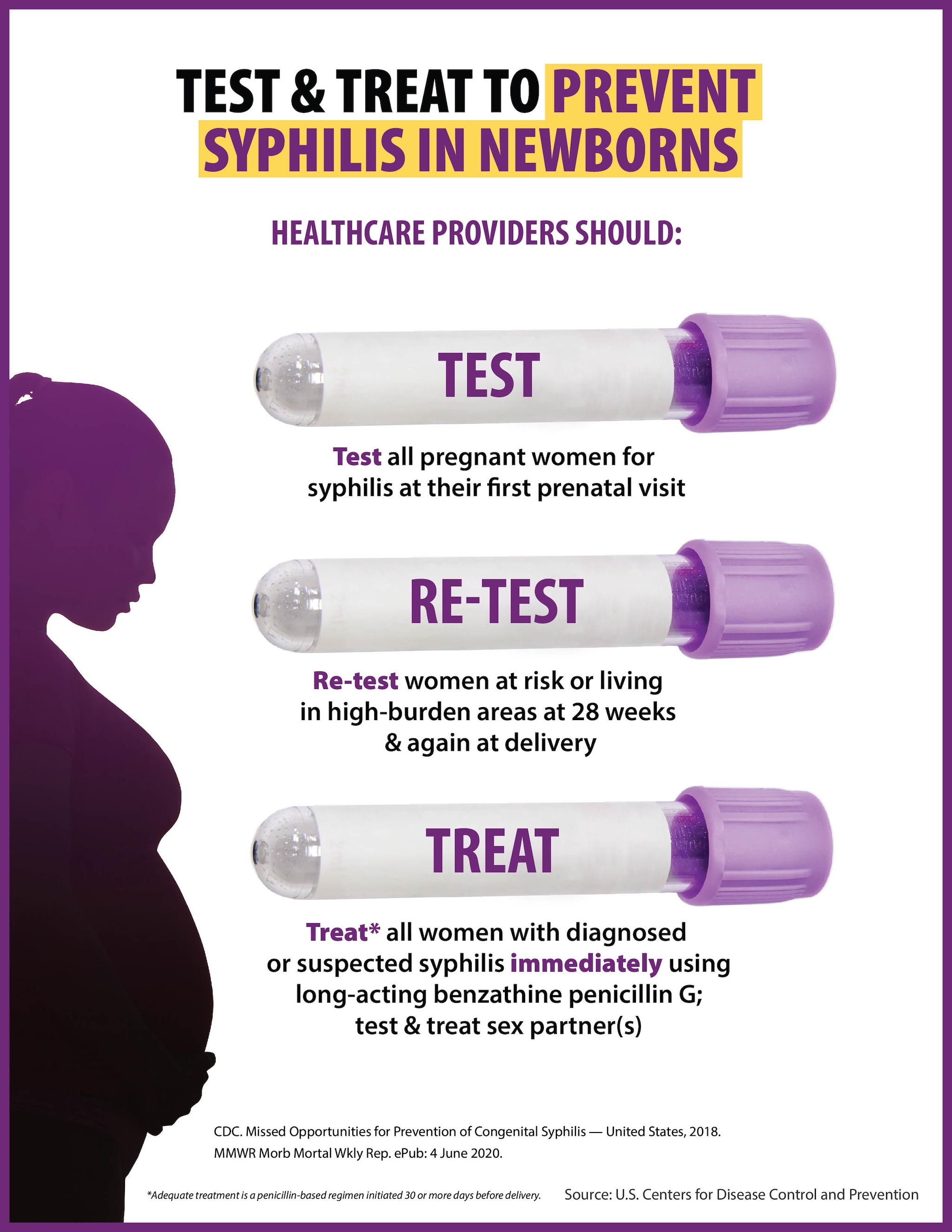 Any damage done to your body’s organs cannot be reversed by treatment, but further damage will be prevented.
Any damage done to your body’s organs cannot be reversed by treatment, but further damage will be prevented.
how to cure syphilis quickly, treatment regimen, modern courses
How to identify the disease – symptoms and diagnosis
Syphilis is an infectious disease, transmitted mainly through sexual contact. It is caused by the bacterium Treponema pallidum ( Treponema pallidum ). The danger of infection is that at the initial stages it almost does not manifest itself, but neglected syphilis can affect almost all organs and tissues of the patient.
There are four stages of syphilis, including the incubation period.
Symptoms
The incubation period is asymptomatic. It begins from the moment the pathogen enters the body and lasts an average of 3 weeks until the first signs of syphilis appear. Each stage of the disease has its own characteristics.
Primary syphilis
The most characteristic manifestation of this stage is the formation of the so-called hard chancre, which is a relief ulcer that does not cause pain (Fig. 1). Most often, the chancre is formed at the site of the introduction of the pathogen and after some time (on average – after 3-5 weeks) passes.
1). Most often, the chancre is formed at the site of the introduction of the pathogen and after some time (on average – after 3-5 weeks) passes.
Figure 1. Hard chancre. Source: Jianjun Qiao/Hong Fang/CMAJ
The most common sites of ulceration are genitals, anus, and lips. It should be remembered that syphilis is not only transmitted sexually – infection can occur through a cut or abrasion, so the appearance of a chancre is possible on almost any part of the body. Another characteristic feature of this stage is an increase in lymph nodes.
Secondary syphilis
This stage usually begins 2 months after infection. It is characterized by skin rashes all over the body (Fig. 2). They are explained by the body’s immune response to the penetration of the pathogen. The internal organs, bone tissue are affected, the temperature may rise slightly, there is a feeling of aches throughout the body. Lymph nodes increase and become dense. Syphilis is contagious at any stage, but it is this stage of the development of the disease that is considered the most dangerous in terms of infection transmission.
Figure 2. Rashes in syphilis. Source: Jianjun Qiao/Hong Fang/CMAJ
After the second manifestation, syphilis goes underground again, a period of latent disease begins, which can last for many years. However, the absence of symptoms does not mean recovery; without treatment, sooner or later the infection will reappear, this time in a much more dangerous form.
Tertiary syphilis
Lack of early treatment leads to the development of the last, third stage of syphilis, when the infection affects almost all the internal organs of the patient, his nervous system, bones and skin.
Tertiary syphilis disfigures a person, can completely deprive of vision. A characteristic feature of the last stage of the disease is the formation of gums, which are soft tumors. Often syphilis affects the brain, as a result, coordination of movements is disturbed, dementia, motor and sensory disorders develop. Most of these changes are irreversible.
Table 1 summarizes the stages of syphilis and the characteristic symptoms.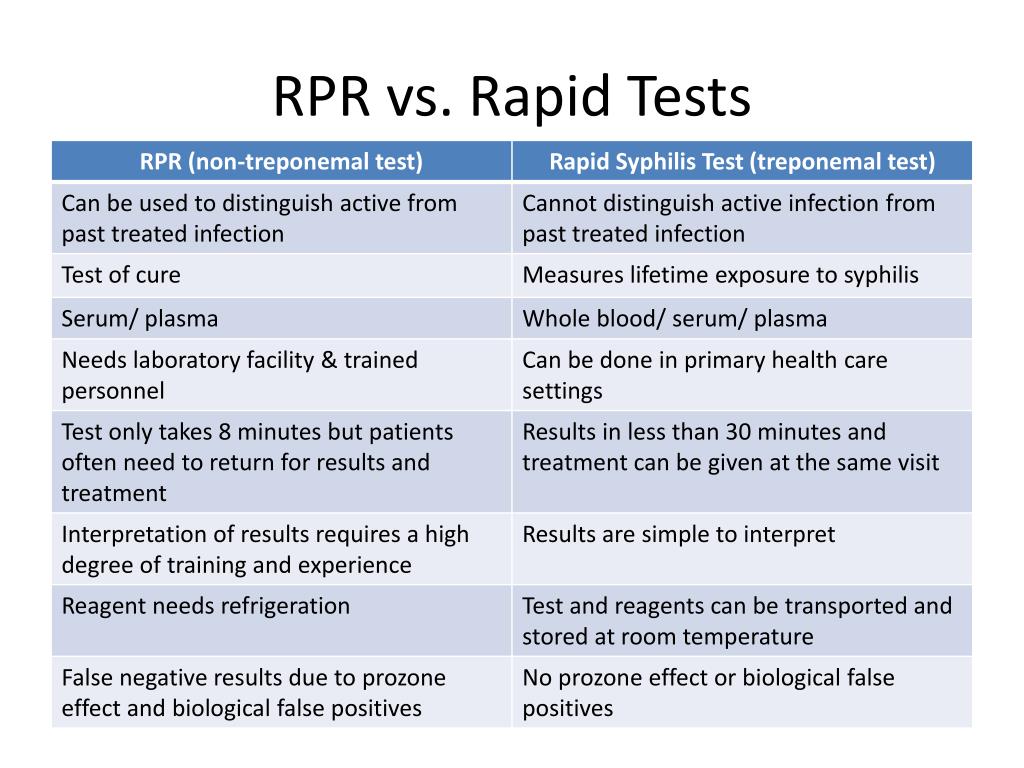
| Stage | Time after infection | Symptoms | Infectiousness of the diseased |
| Incubation period | 8 – 180 days (usually 3 weeks) | No external manifestations at this stage | + (more contagious men) |
| Primary syphilis | 5-7 weeks after end of incubation period | Swollen lymph nodes and formation of painless ulcers, often located in the genital area | + |
| Secondary syphilis | 8-10 weeks | Eruptions all over the body (mostly painless), mild fever, joint and muscle pain, weakness | + |
| Tertiary syphilis | 1-2 years | Formation of soft tumors (gummas), deformities of organs, irreversible damage to the nervous system | + |
Important! Syphilis is contagious even during the so-called “seronegative window”, when a person has already become infected, and laboratory tests are not yet able to detect it, and the patient does not show any symptoms.
Diagnosis
Diagnosis of syphilis consists in the detection of the causative agent of the disease, treponema pallidum, in the body, by direct or indirect methods. In the first case, the bacterium itself is determined (Fig. 3), and in the second, the blood is examined for the presence of antibodies to it (IgM / IgG).
Figure 3. Pale treponema. Source: CDC/David Cox
Initially, the Wasserman reaction was used to confirm the diagnosis, which involves the introduction of an antigen into a biomaterial sample with the formation of specific antibodies. The indisputable advantage of this method was the ease of implementation, but there was also a big drawback – the reaction often gave a false positive result. Today, this method is considered obsolete. It should be understood that even modern methods have both advantages and disadvantages (Table 2).
Diagnostic methods | Test material | Advantages | Drawbacks |
1.
| Patient specimens, chancre discharge | Simplicity, low cost and ease of implementation | Not relevant in the detection of late and latent forms of the disease |
2. Indirect: 2.1 Non-treponemal:
2.2 Treponemal:
| Blood serum, capillary fingerstick (only for rapid methods) | Convenient, cheap, controllable cure | Insufficient sensitivity in the detection of late forms of the disease, as well as a high percentage of false positive results |
The doctor chooses diagnostic methods based on the clinical picture and the patient’s complaints.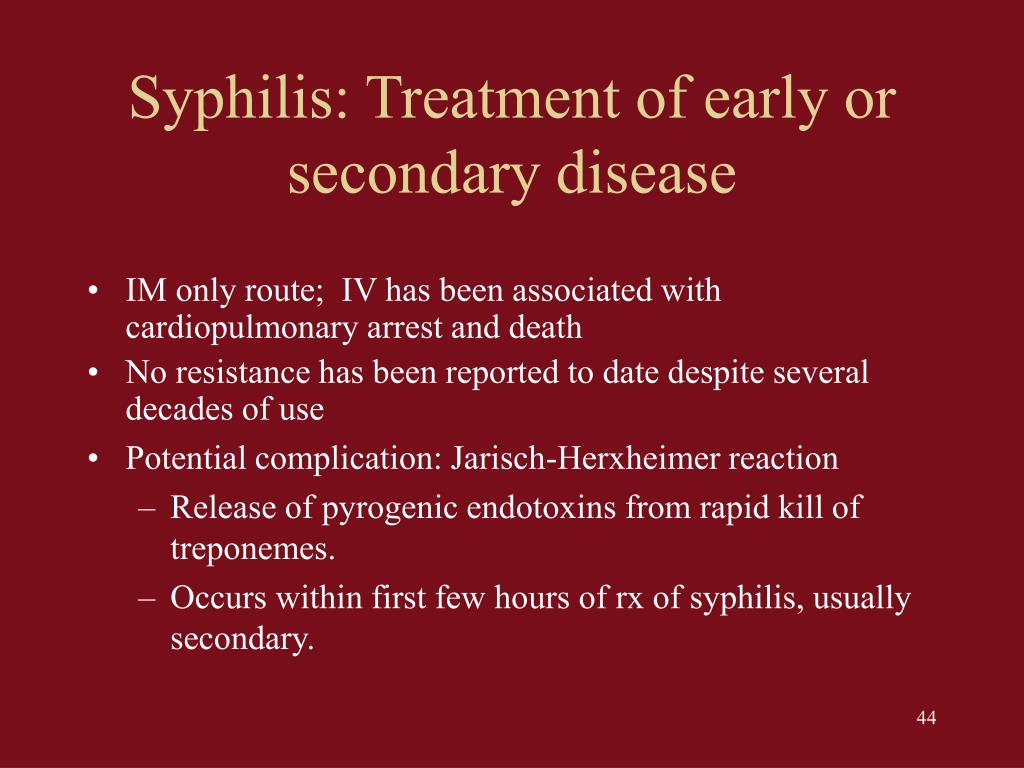 When the diagnosis is confirmed, the patient is registered in the venereal clinic. Any sexual relations are excluded, alcohol intake is prohibited.
When the diagnosis is confirmed, the patient is registered in the venereal clinic. Any sexual relations are excluded, alcohol intake is prohibited.
Important! In case of a positive analysis, not only sexual partners, but also all family members should be informed – they will also need to undergo appropriate diagnostics.
Which doctor should I contact?
A dermatovenereologist deals with the diagnosis and treatment of sexually transmitted diseases. If for some reason this particular specialist cannot be found, women should consult a gynecologist, and men a urologist.
Treatment
Photo: freepik.com
The treatment of syphilis involves, first of all, the impact on the cause, that is, the cause of the occurrence – the pathogen – of the disease (in medicine this is called etiotropic therapy). Conventionally, the treatment is divided as follows:
- Specific – prescribed in case of a confirmed diagnosis.
- Preventive – carried out by sexual partners of a patient with syphilis, or people who have had contact with his blood.

- Trial – appropriate if the doctor suspected a syphilitic lesion of tissues and organs, and the diagnosis cannot be confirmed by laboratory tests.
- Additional – prescribed for relapse of the disease to patients who have previously undergone etiotropic treatment.
However, where to start treatment and what kind of specialist does it?
Drug treatment
Antibiotics are used to treat syphilis – their action is aimed at eliminating the activity of pale treponema. Usually, the doctor prescribes penicillin drugs, but these antibiotics often give an allergic reaction, so modern treatment of syphilis involves the use of less allergenic antibiotics – for example, from the groups of tetracyclines, cephalosporins (ceftriaxone) or macrolides (azithromycin).
Penicillins
Antibiotics of this group have been used in the treatment of syphilis for several decades and during this time they have proven themselves excellently – pale treponema has not developed resistance to them. Penicillin is available in the form of tablets and injection, but the second option is preferable for the treatment of syphilis. The patient is given injections once every 3 hours, so the treatment is carried out in a hospital.
Penicillin is available in the form of tablets and injection, but the second option is preferable for the treatment of syphilis. The patient is given injections once every 3 hours, so the treatment is carried out in a hospital.
When using penicillin, adverse reactions often occur:
- nausea,
- vomiting,
- diarrhea;
- fever,
- convulsions.
Important! The most common complication associated with the use of penicillin antibiotics is the development of allergic reactions. Most often they manifest themselves in the form of urticaria and edema.
Penicillin is suitable not only for the specific but also for the preventive treatment of syphilis.
Tetracyclines
Antibiotics of this group are most effective in the treatment of primary and secondary forms of the disease. They are available in the form of tablets, capsules, ointments and injection (tetracycline hydrochloride). In the treatment of syphilis, a tablet form is also used – the intake is indicated up to 4 times a day. During the course of treatment, it is undesirable to be in direct sunlight, since tetracyclines can increase skin sensitivity to ultraviolet radiation. It is very important not to take breaks in taking the drug – in this case, the causative agent of the disease can develop resistance to the antibiotic.
In the treatment of syphilis, a tablet form is also used – the intake is indicated up to 4 times a day. During the course of treatment, it is undesirable to be in direct sunlight, since tetracyclines can increase skin sensitivity to ultraviolet radiation. It is very important not to take breaks in taking the drug – in this case, the causative agent of the disease can develop resistance to the antibiotic.
Cephalosporins
In the treatment of syphilis, these antibiotics are used intramuscularly and intravenously. Depending on the severity of the course of the disease, the course of treatment ranges from 5 to 20 days. Cephalosporins are capable of provoking the development of such side effects as digestive disorders, sleep disturbance and skin rashes. To reduce the risk of their development, it is recommended to take vitamins and probiotics in parallel.
Macrolides
Macrolides can quickly cure the disease in the early stages, but in tertiary syphilis their use does not give the expected effect.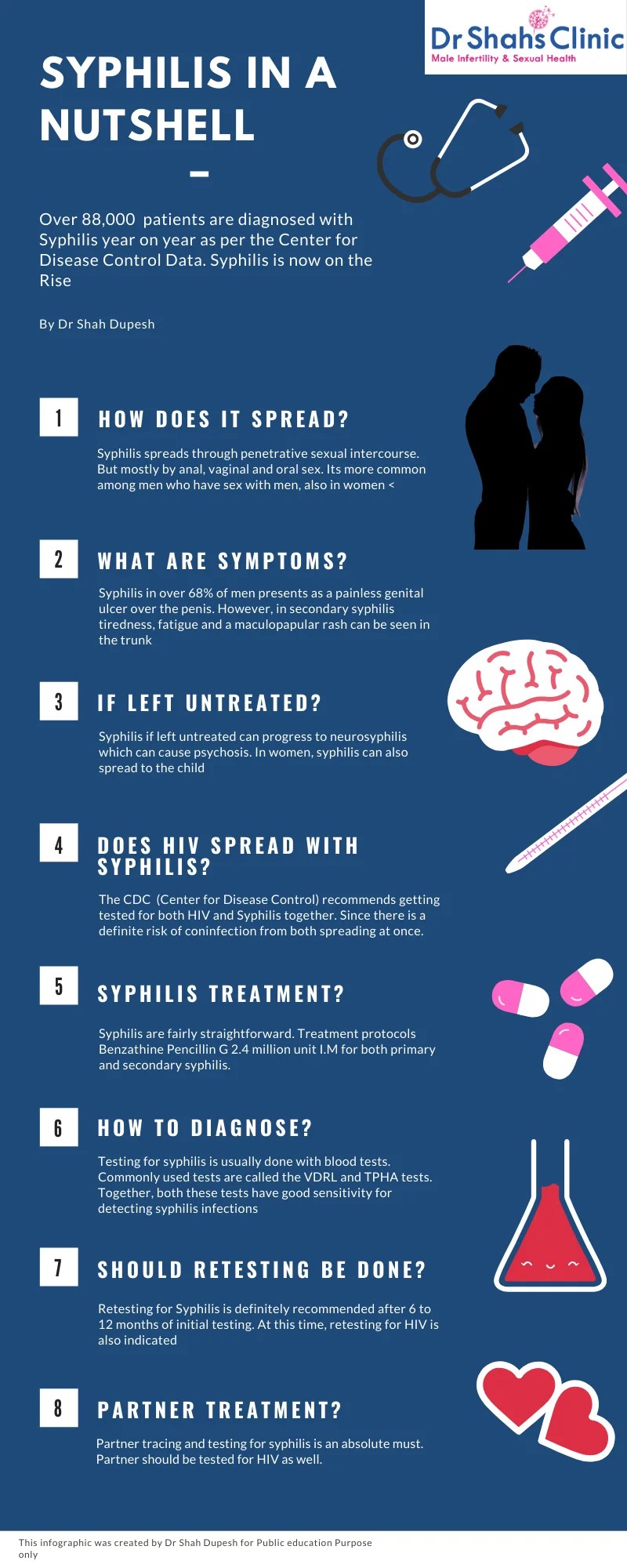 Simply put, such antibiotics do not immediately kill pale treponema, but gradually make it unviable. The drug is released in the form of tablets. Reception is shown once a day, the course of treatment continues 9-12 days. The dosage is determined by the attending physician, based on the clinical picture, age and anthropometric data of the patient.
Simply put, such antibiotics do not immediately kill pale treponema, but gradually make it unviable. The drug is released in the form of tablets. Reception is shown once a day, the course of treatment continues 9-12 days. The dosage is determined by the attending physician, based on the clinical picture, age and anthropometric data of the patient.
Topical treatment
Topical treatment for syphilis may include ointments, creams or gels to relieve the skin manifestations of the disease.
Physiotherapy
Physiotherapy in the treatment of syphilis is used for general strengthening of the body and combating the neurological manifestations of the disease. Physiotherapeutic methods cannot be the main ones in the fight against infection.
Auxiliary treatment
As an adjuvant therapy for the treatment of syphilis, the following are used:
- vitamins,
- dietary supplements,
- immunomodulators.
This maintenance treatment has no effect on the causative agent of syphilis and is only an additional measure in the fight against the disease.
Traditional methods
There are no traditional methods for the treatment of syphilis. Self-treatment of syphilis does not give the desired effect. The treatment regimen should be determined only by a specialized specialist.
Mercury: is it currently used?
The oldest treatment is mercury (both oral and ointment). Mercury effectively destroys pale treponema, but at the same time, due to its high toxicity, it also has a destructive effect on the patient’s body. Mercury was used to fight syphilis for several centuries until the middle of the last century. Currently, mercury preparations are prescribed extremely rarely due to the large number of side effects.
Treatment of pregnant women
When syphilis is detected in a pregnant woman, medical tactics will depend on the duration of pregnancy and the severity of the disease. In some cases, the risk of developing severe congenital pathologies in a child is high, then it is recommended to terminate the pregnancy. However, antibiotic treatment is most commonly prescribed. With timely therapy, the prognosis for the child is most often favorable.
However, antibiotic treatment is most commonly prescribed. With timely therapy, the prognosis for the child is most often favorable.
Read more about the treatment of syphilis in pregnant women in the article “Syphilis in Women”.
Treatment at different stages of the disease
Depending on the stage of syphilis, medical tactics differ. Antibiotics are prescribed in the early stages, and if treatment was started in a timely manner, this approach gives the expected result. In the later stages, when pathological changes occur in the internal organs, hospitalization is mandatory, many patients are forced to undergo inpatient treatment for several months.
In addition, bismuth and arsenic preparations may be prescribed, and in case of serious changes in tissues and organs, surgical intervention may be required after therapy.
Important! The sooner treatment is started, the sooner the disease can be cured.
Follow-up serological tests are required at the end of treatment to ensure that the patient is completely healthy. Untreated syphilis is fraught with serious complications, so testing after treatment is mandatory.
Untreated syphilis is fraught with serious complications, so testing after treatment is mandatory.
How long is the treatment?
If syphilis is diagnosed early, antibiotic treatment usually takes 2-3 weeks. When using intramuscular drugs, the course may include 1-3 or 5 injections, although there are drugs that need to be injected every 4 hours.
Patients diagnosed with secondary or early latent infection will have to undergo longer therapy – about 28 days. In the case of tertiary or late latent syphilis, the course is even longer, in addition to 28 days of primary therapy, it includes a second treatment for 14 days, prescribed 2 weeks after the completion of the first.
Is it possible to contact people during treatment?
Treatment of syphilis is most often carried out in a hospital, in the infectious diseases department. In the early stages, outpatient treatment at home is possible. In this case, the patient’s family is recommended complete isolation. If this is not possible, it is necessary to limit contact with the sick person, do not use common utensils, towels and hygiene products. The apartment should be wet cleaned with antiseptics at least 2 times a week.
If this is not possible, it is necessary to limit contact with the sick person, do not use common utensils, towels and hygiene products. The apartment should be wet cleaned with antiseptics at least 2 times a week.
Important! Patient’s sweat and urine are not contagious. Saliva can be infected if there are syphilitic ulcers in the patient’s mouth.
Is syphilis curable? Prognosis
With a timely diagnosis and correct treatment, the prognosis is favorable in most cases. Syphilis is curable in the early stages, as well as in pregnant women in the first trimester. The latent form of the disease with timely therapy is also curable.
In the later stages, it is much more difficult to cure the patient, since in most cases there is irreversible damage to the internal organs, and the treatment is mostly focused on stopping the further development of pathological processes.
Possible complications
Complications of syphilis affect almost all organs and systems.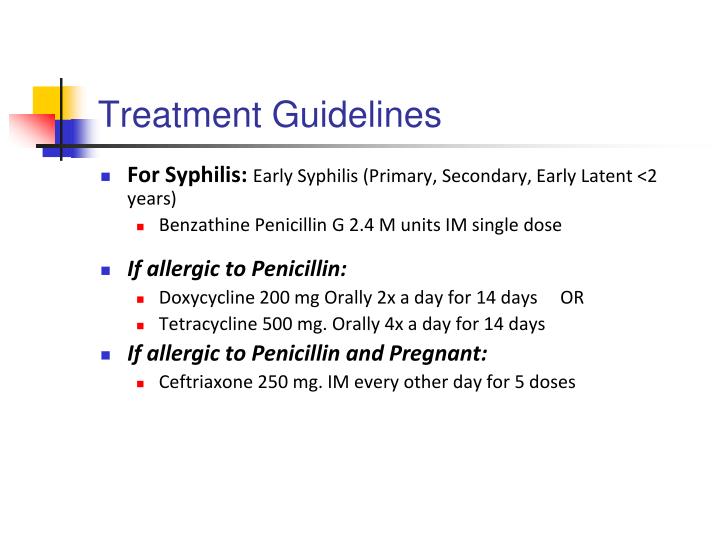 Most often, they develop with untimely detection of the disease or improper treatment. Here is a list of the most common complications:
Most often, they develop with untimely detection of the disease or improper treatment. Here is a list of the most common complications:
- alopecia areata or total alopecia (hair growth may recover after treatment),
- phimosis (inability to expose the glans penis),
- gangrene of the penis,
- scars from skin ulcers,
- fatty degeneration of the kidneys,
- syphilitic hepatitis with subsequent degeneration of liver tissues,
- damage to bone and muscle tissue (the entire musculoskeletal system suffers),
- syphilitic lesions of the heart muscle,
- nose deformity,
- damage to the nervous system (neurosyphilis) – dementia, paralysis, insomnia, visual and hearing impairments.
In pregnant women, syphilis can lead to preterm birth, stillbirth, congenital syphilis in the baby, and a wide range of fetal pathologies (congenital diseases of the heart, kidneys, gastrointestinal tract, nervous system, etc. ). In 2012, 350,000 pregnancies were complicated due to syphilis worldwide: 143,000 stillbirths and 62,000 newborn deaths were registered, and 102,000 infants were diagnosed with congenital syphilis.
). In 2012, 350,000 pregnancies were complicated due to syphilis worldwide: 143,000 stillbirths and 62,000 newborn deaths were registered, and 102,000 infants were diagnosed with congenital syphilis.
What happens if syphilis is not treated
If left untreated, tertiary syphilis develops. As mentioned above, this stage of the disease is manifested by irreversible disorders of the internal organs, skin and nervous system. In most cases, the prognosis is unfavorable – therapy is aimed mainly at slowing down the development of the infectious process.
Prevention
Photo: Fantastic Studio / freepik.com
To protect yourself from contracting syphilis, you should follow a few simple rules:
- Avoid casual sex. As a last resort, use a condom. It does not provide 100% protection, but it still significantly reduces the risk of disease transmission.
- Use only your own personal hygiene items (eg toothbrushes or towels).
- If a family member develops syphilis, close contact with the infected person should be avoided, shared utensils should not be shared, and the home should be regularly disinfected.

- In case of accidental sexual contact with a potential or obvious carrier of the disease, you should contact a venereologist – he will prescribe prophylactic antibiotic treatment.
Following these preventive measures will help you avoid infection and keep your loved ones safe.
About reinfection
If you have had syphilis before and have recovered, you can become infected again. After an illness, protective immunity is not formed. You can only protect yourself from re-infection by excluding sexual contact with partners who have not passed laboratory tests for syphilis.
Conclusion
One of the main dangers of syphilis is the asymptomatic course of the disease, which gives the carrier a false impression of safety. And this, in turn, is fraught not only with the transition of the disease to severe forms, but also with the risk of infecting other people. With timely detection of the disease and a correctly drawn up therapeutic scheme, the prognosis for a cure is favorable.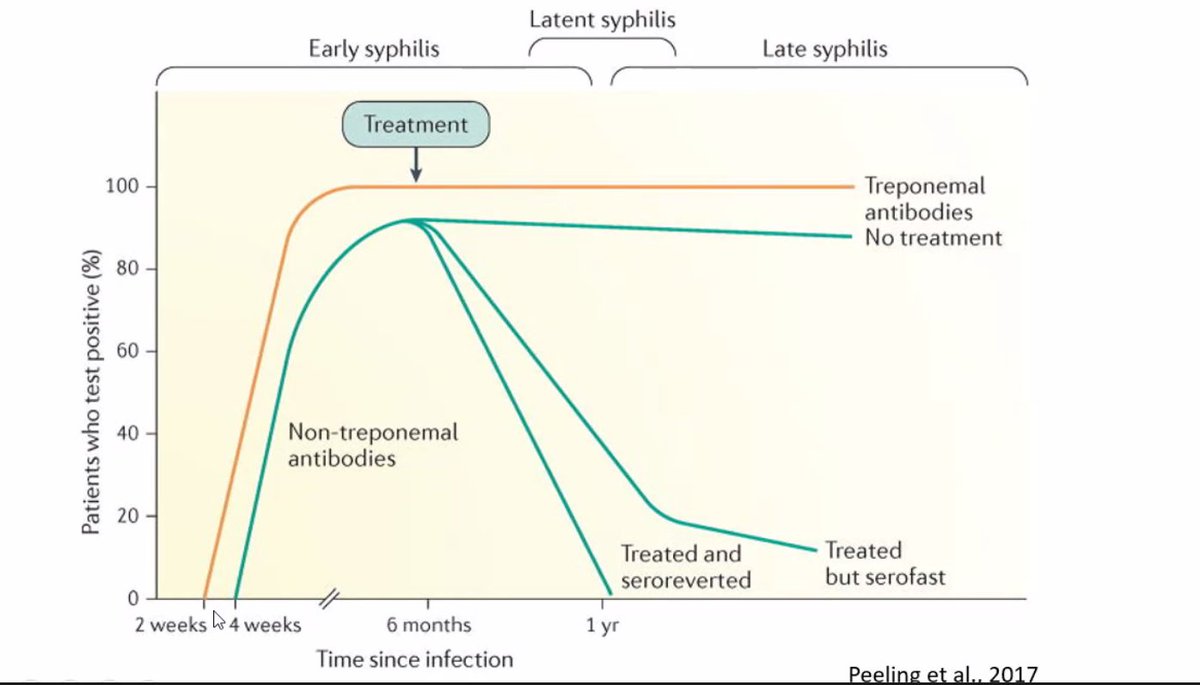
Sources
- Batpenova G.R., Baev A.I., Dzhetpisbaeva Z.S., Dzhulfaeva M.G., Akhmadyar N.S. Preventive treatment of syphilis // Clinical Protocol for Diagnosis and Treatment
- Mavrov G.I., G.I., Kamenev V.I., Mironyuk V.I. // Outpatient treatment of patients with early syphilis with durant penicillins in combination with doxycycline
- K. Lomonosov // Treatment of syphilis
How syphilis is treated – Omega-Kyiv reference book
To treat this disease, you should contact a clinic that specializes in high-quality diagnostics, therapy and prevention of infectious diseases.
This is a certain group of infectious diseases that are based and develop in the human body through the action of pathogenic microorganisms.
Diagnosis of syphilis
If you suspect a disease, you must contact a medical institution for the necessary tests. It is better to choose a clinic that has the latest diagnostic and laboratory equipment, which allows diagnosing the disease with high accuracy and at an early stage.
The patient undergoes an anonymous and accurate examination:
- reception and consultation of an experienced specialist;
- microbiological examination of scrapings from one or both sexual partners;
- microscopic examination of genital tract secretions;
- PCR diagnostics;
- OMT ultrasound;
- additional consultations of other specialists (as needed).
After a complete and qualitative examination, the patient is offered an individual scheme for taking medications. Drugs that are active only against a certain type of virus are used.
Treatment of syphilis
Diagnosis and treatment of syphilis must be done correctly, otherwise the disease will have relapses.
Only after receiving reliable results of the patient’s examination, the scheme and course of therapy is prescribed. Treatment of syphilis is usually carried out in an inpatient department, accompanied by experienced professionals.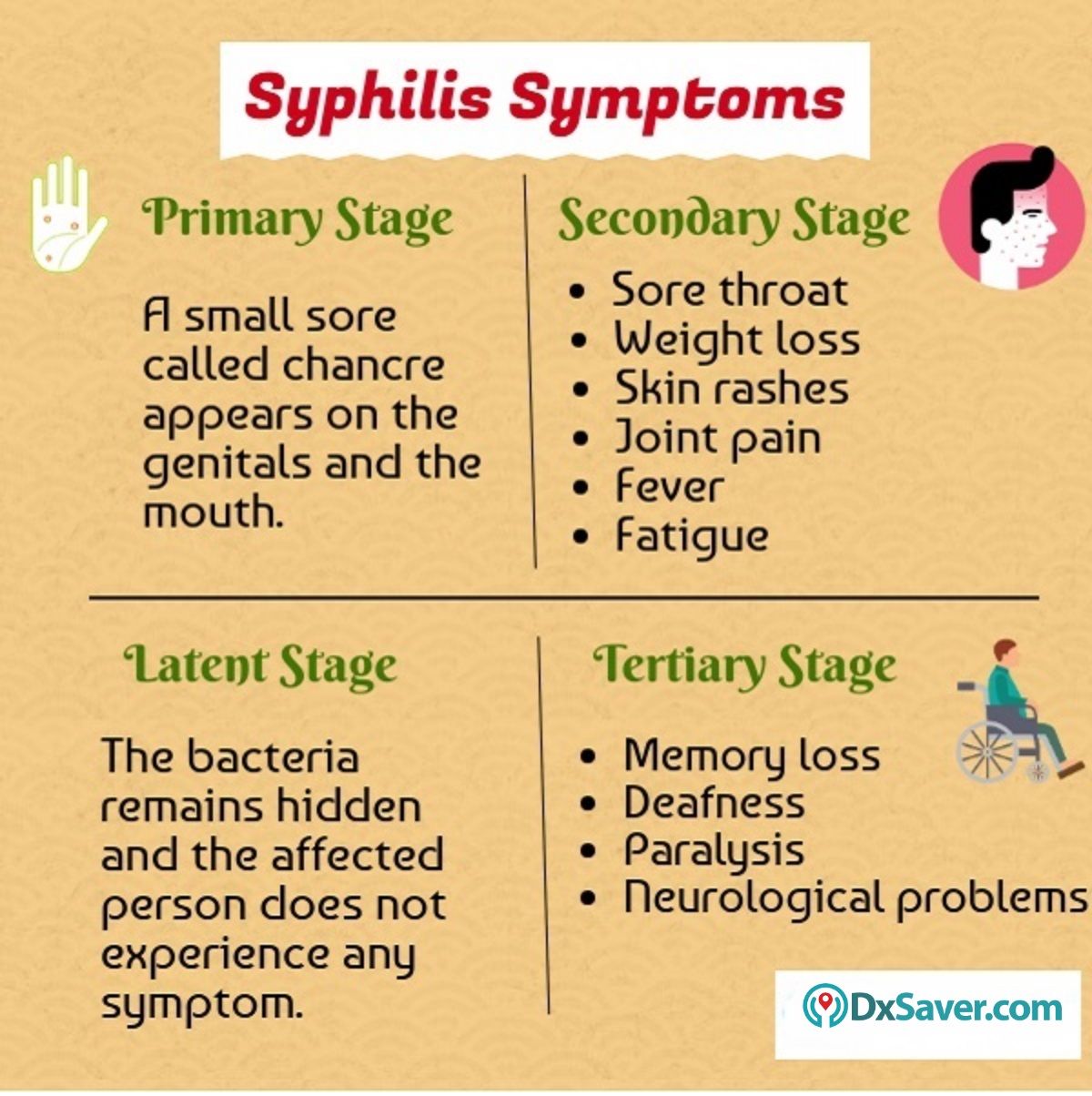 Treatment in the hospital of the clinic is possible for two sexual partners at once. In this case, both people receive a complete examination of the body and a comprehensive, individual scheme. Such a scheme is very effective if permanent sexual partners undergo therapy.
Treatment in the hospital of the clinic is possible for two sexual partners at once. In this case, both people receive a complete examination of the body and a comprehensive, individual scheme. Such a scheme is very effective if permanent sexual partners undergo therapy.
Syphilis has a specific treatment, this is the use of drugs:
- antiviral;
- antifungals;
- anti-inflammatory.
Mono and polio therapy available. If the patient needs treatment for concomitant diseases, complex manipulations are carried out with his consent. It is possible to carry out polytherapy, using several types of drugs. In the treatment of a specific diagnosis, only syphilis, monotherapy is used.
Prevention of syphilis
Syphilis does not indicate promiscuity or promiscuity. Today, 20% of the world’s population has experienced this diagnosis on themselves. In this case, a person should not have any constraints. At the first symptoms of the disease, syphilis requires treatment and prevention.

 But, you still have syphilis and it is dangerous. You should see your health care provider even if you do not have signs or symptoms. If you do not, you may get sicker.
But, you still have syphilis and it is dangerous. You should see your health care provider even if you do not have signs or symptoms. If you do not, you may get sicker. Straight:
Straight:
